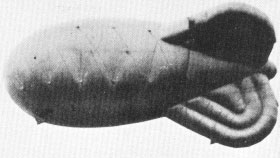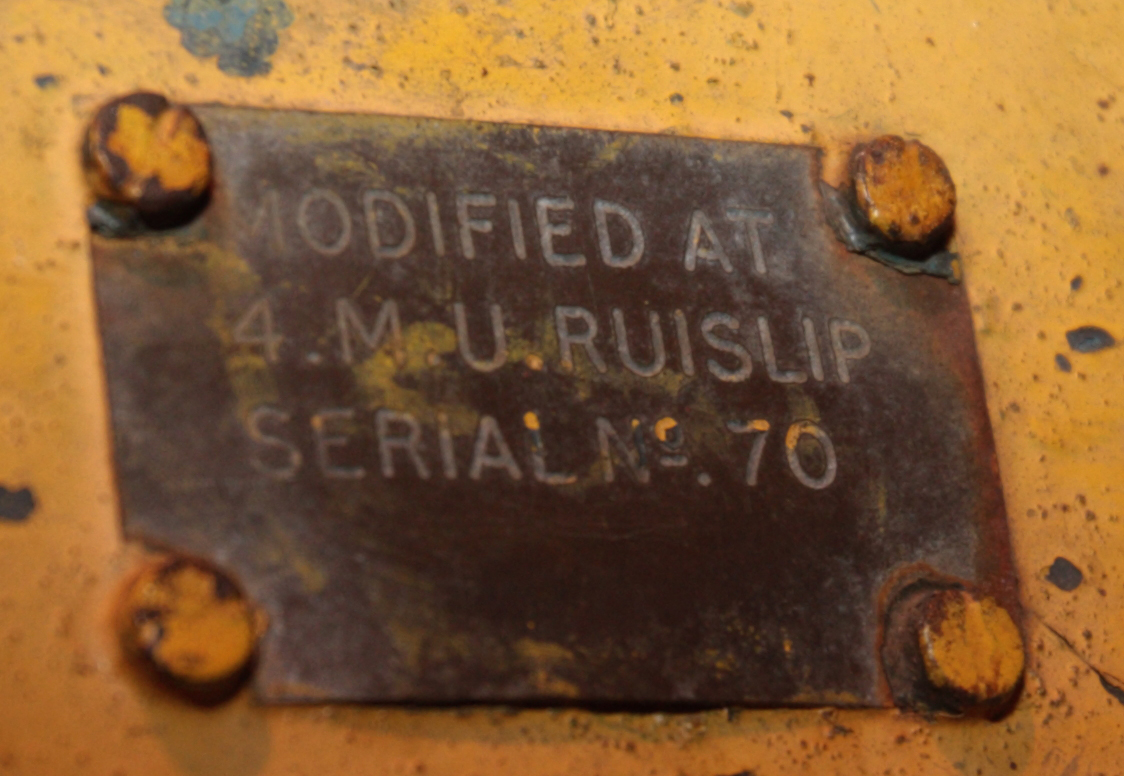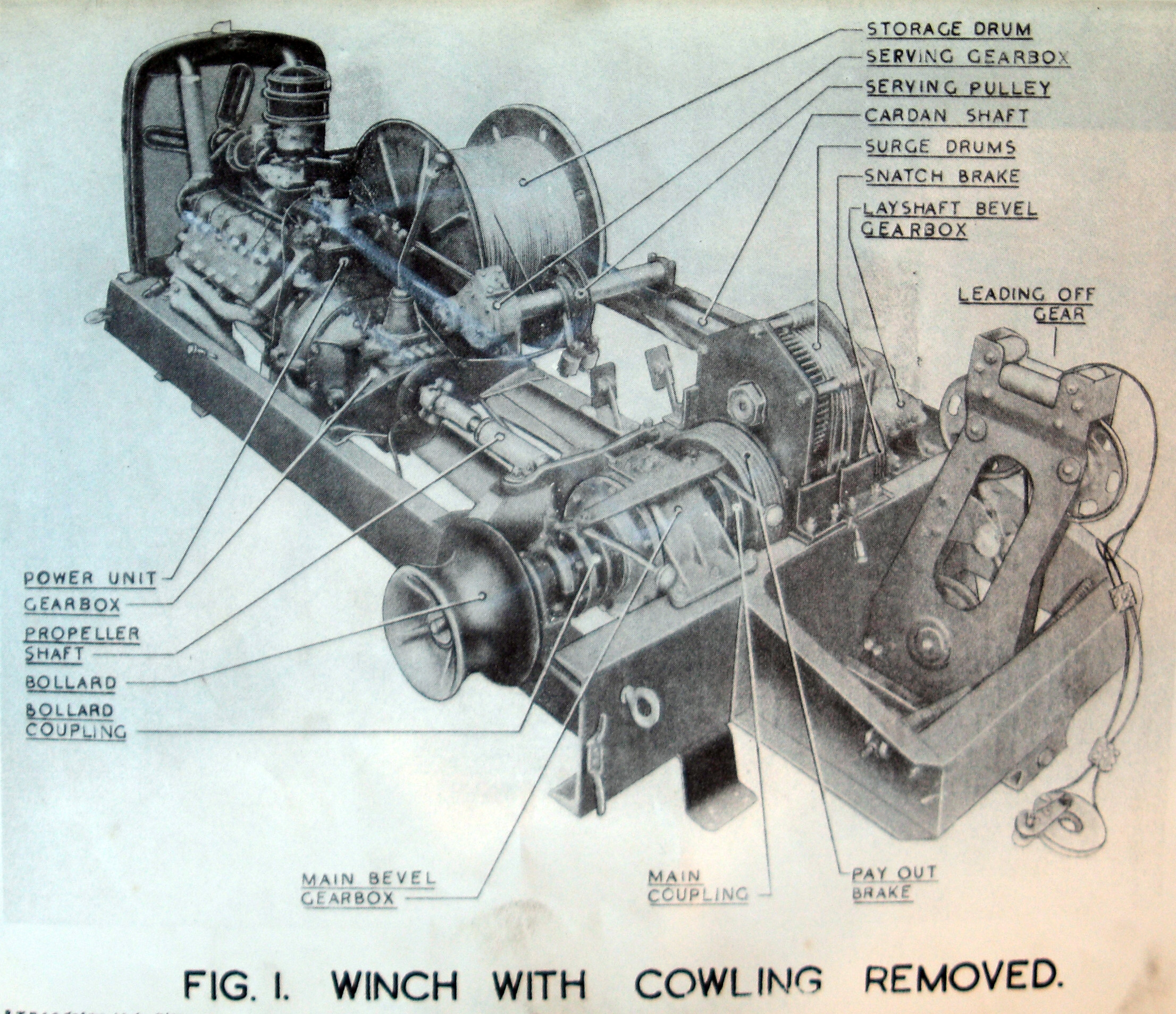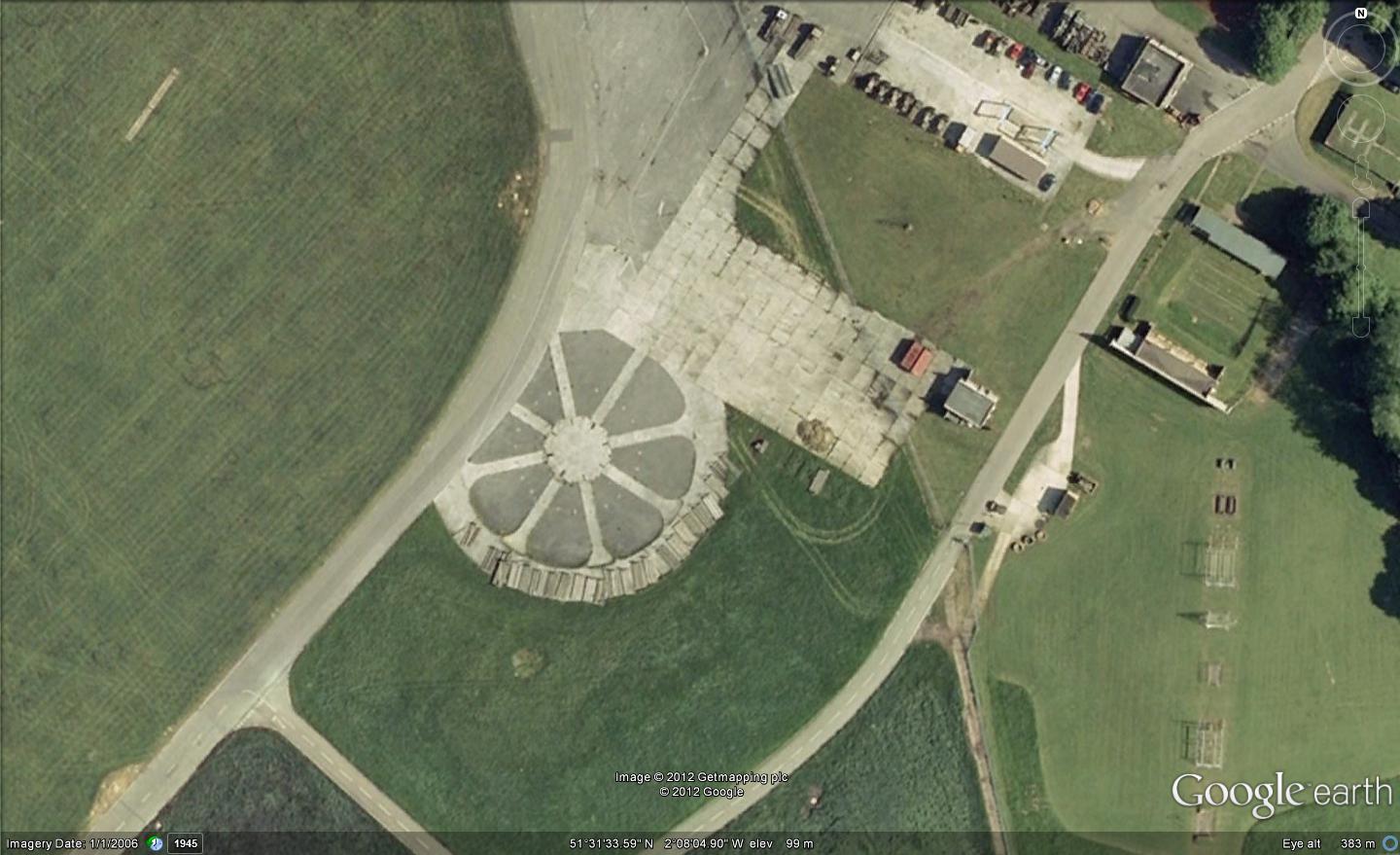 Click for Site Directory
Click for Site Directory
The Vintage Flight Wild Balloon Winch at 621 Volunteer Gliding Squadron, Hullavington
Please note these images may take some time to download-be patient!!
In April 2012 I was privileged to be able to have access and photograph a unique item of Barrage Balloon history, a rare surviving Wild Barrage Balloon
winch that is still used by 621 Volunteer Gliding School at Hullavington. Hullavington was the site of the last Barrage Balloon Unit of the Royal Air Force
and the last balloon flew there in 1995 on the day it was closed. I was invited by 621 V.G.S. Squadron Administrator Neville Cullingford to make a visit after he had made contact with Phyll Wood,
President of the BBRC. Neville is Honorary Curator of the Royal Observer Corps Museum and like me is an aviation enthusiast and historian, so we both
appreciated the interest this visit would generate for 621 V.G.S. and myself.
The Royal Observer Corps has a trophy that is in the form of a Barrage Balloon and Neville contacted us about this and we hope to see the trophy at some
stage in the future and produce a webpage on it.
The Air Training Corps have a Vintage Flight of gliders, the Sedburgh, Cadet MkIII, Prefect and Swallow based at Hullavington.
This winch is a Wild Mark IV and has undergone considerable modification, as many winches did post-war to enable it to launch gliders.
621 V.G.S have named it the "Babe" as it is quite small compared to some of the modern winches on the site.
Some of the modifications were done by No 4. Maintenance Unit at Ruislip and the winch was provided by The Gliding and Soaring Association (G.S.A.)
at Halton via 10 Regiment of Aldershot.
At the time of my visit the Easter Continuous Gliding Course was in full swing and I am very grateful to Nevlle Cullingford and Squadron Leader David Woolcock
for taking the time and trouble to accommodate me at the airfield.
The winch is kept in a secure site and is used only on specific occasions for glider work.
However I was pleased to recognize much of the winch despite the modifications. An added bonus was that the winch appears to have been removed from a
winch lorry and quite cleverly affixed to a 4 wheeled WWII hydrogen gas trailer. Thus combining two items of Barrage Balloon
history into one.
The original petrol engine had been removed and replaced with a Leyland diesel version and the cable drum was replaced with a different version since
7,000 feet of cable was not needed.
The winch still on an original chassis but welded to a gas trailer chassis.
The winch still on an original chassis but welded to a gas trailer chassis but viewed from other side
The winch still on an original chassis but welded to a gas trailer chassis-rear view

The winch modification plate.
The winch cage has no standard dashboard or rate of descent gauge and the seat looks a bit modern!.
The winch is driven by this Leyland diesel engine
The winch bollard has gone
Above the winch drum and brake disc as it is today.

The winch was designed with surge drums and a serving pulley to keep the cable in a orderly lay on the winch drum.
The winch originally pulled cable from the leading off gear down through a tension meter pulley and then to a lower pulley and
then through a horizontal hollow trunnion, from there it passed around the upper and lower surge drums before being fed via
the serving pulley onto the storage drum. The surge drums put all the tension in the cable and this enables the cable to be stored
on the storage drum under light tension. Despite its complicated appearance these designs worked well and gave a good solution
to the need for a winch that could haul down at a high rate and could be used by men and women in comparative safety.
The gas trailer chassis.
The gas trailer -brake on side..
The winch cleats remain on the bollard side.
The winch cage to protect the winch driver.
The gas trailers rear triangular reflectors
The gas trailer - rear view.
A glider in store.
The original bed for the balloons is still quite visible.

Aerial view of remainder of balloon bed
The concrete blocks used to hold the balloon down are to be found in various parts of the site and are now used to demarcate
parking areas.
This winch is quite a significantly unique piece of barrage balloon history and it is good to see that it is still in use by 621 VGS.
Some purists may consider the winch to have been "cannibalised" but I do not see it that way. Yes it has undergone considerable
modification to make it more suitable for glider launching, but it is still a barrage balloon winch and a hydrogen gas trailer and clearly
unique and must be preserved at all costs for future generations. I would like to thank Squadron Leader Woolcock, Squadron Administrator
Neville Cullingford of 21 V.G.S. and the staff for their time, trouble and patience, in allowing me access and for their unstinting hospitality
when I was there.